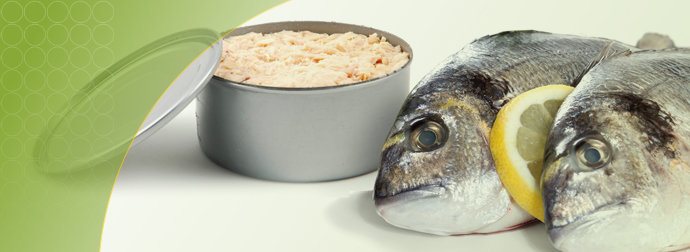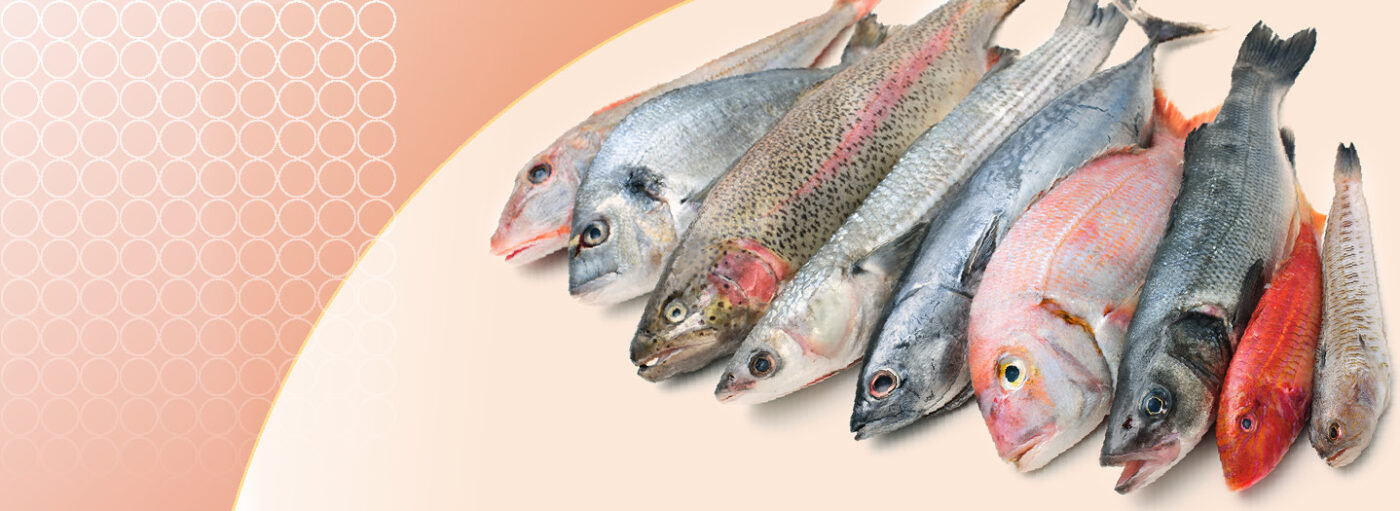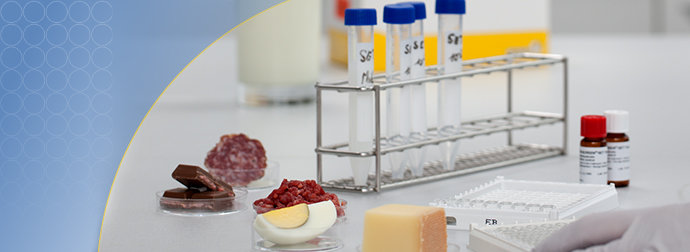
Seafood
Sensitive test systems to analyze fish and aquaculture
- Home
- /
- Industries
- /
- Seafood
Industries
Seafood
From fish farming to fish processing, seafood must undergo extensive testing in order to obtain safe and high quality products.
R-Biopharm test kits can be applied throughout the whole production chain: from raw materials to final products, from the inspection of incoming goods to hygiene monitoring and finally to product analysis for correct labeling. Our large portfolio of different test formats can be used to analyze raw fish, canned fish and seafood such as shrimps and mussels.
Antibiotics, hormones and anabolics
Hormones and anabolics like methyltestosterone can be used for sex reversal in fish to obtain fast-growing all-male populations. Residues of these substances can bear health risks for consumers. For this reason, the use of hormones and anabolics in aquaculture is completely banned in most countries with exemptions for veterinary purposes. Residues in fishery and aquaculture products can also be caused by incorrect or illegal use of antibiotics which bear health risks for consumers. Additionally, the inappropriate use of antibiotics contributes to multi-resistance of pathogen bacteria.
Mycotoxins
Plant based aquaculture feed has a high risk of contamination with mycotoxins, especially in countries with humid tropical climates. Mycotoxins are toxic secondary metabolites produced by molds and can accumulate in various agricultural products. Mycotoxins have adverse effects on fish live stocks, like poor growth rates, low body weight gain and high mortality depending on the fish species and the mycotoxin. Thus, a proper risk assessment is important to minimize the exposure of aquacultures to mycotoxins and to avoid economical losses.
Pathogens, spoilage organisms, bacterial toxins and viruses
Fishery products are a favorable environment for bacteria such as Listeria, Salmonella, Vibrio or Clostridium, which may cause serious foodborne diseases. Toxins, yeasts and viruses may be present in fishery products, too; especially mussels are at risk of a norovirus contamination. The monitoring of pathogens throughout the whole production chain is therefore crucial to ensure consumer protection and product stability.
Fish species identification
Fish must be labeled with the commercial designation of the species and its scientific name, according to EU Regulation 1379/2013 on the common organization of the markets in fishery and aquaculture products. The regulation also states that, for the purpose of consumer protection, national authorities should make full use of available technology, including DNA testing. To ensure correct labelling and avoid financial damages, enterprises as well as government agencies can rely on the highly sensitive and specific real-time PCR kits offered by R-Biopharm.
Acids and other constituents
Organic acids affect the rate of growth of pathogenic bacteria in food. Lactic acid and acetate are widely used as preservatives and anti-oxidants in fish, while sulfite is particularly used as preservative in shrimps. If the preservatives are injected into the fish, the concentration is precisely known. But if the fish is soaked in a solution, it is necessary to check the concentration in the tissues. Moreover, naturally occurring organic acids like lactic acid can play a role if they are present in the bacterial flora. Since there are legal limits depending on the country, the concentration of acids and other preservatives should be checked in the final product.
Histamine
Histamine is produced in fish during storage and can exceed levels of 1000 mg/kg. Several countries have set maximum tolerance levels for histamine due to its potential for human illness (commonly referred to as “scombroid poisoning”). The limit value for fish and fishery products is between 50 and 200 mg/kg depending on the fish species. Species that contain high levels of histamine are e.g. tuna, mackerel, sardines and anchovy. Fish of good quality should contain less than 10 mg/kg histamine.






